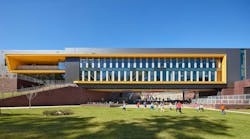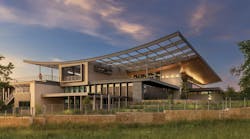Exceeding Thermal Performance Goals by Choosing Wood
Designing with wood offers architects the flexibility to design projects with increased insulation. From a thermal perspective, wood-frame building enclosures are inherently more efficient than steel-frame, concrete, or masonry construction. This course will provide an understanding of how wood can help contribute to significant energy savings in the built environment.
Learning Objectives
- Discuss the thermal advantages of building with wood.
- Describe how designing with wood can enable design flexibility to maximize building performance.
- Explain common methods for controlling heat and airflow in wood-frame and mass timber buildings.
- List common insulation, airtightness, and vapor permeability strategies often employed with wood construction to achieve effective thermal efficiency.


